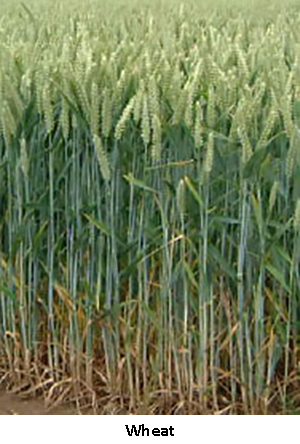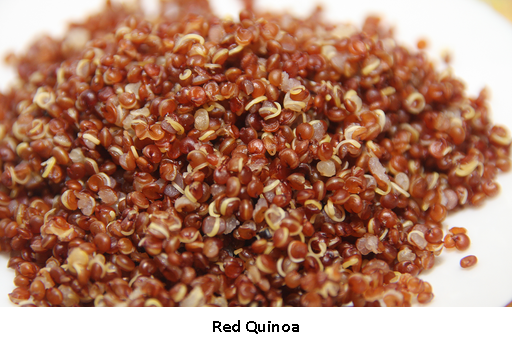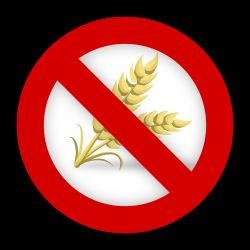It seems that everyone is on a special free-from diet these days. The list of unpopular ingredients to avoid includes dairy, fat, sugar, genetically-modified anything, nuts, and gluten. And for some reason, there seems to be a huge crowd of individuals who must now be gluten-free. What’s this all about?
In the United States, approximately 1% of the total population has been diagnosed with celiac disease (CD) - an auto-immune disorder triggered by gluten consumption. Another estimated 6% of Americans have gluten sensitivity. CD is characterized by chronic inflammation of the intestines, destruction of the intestinal villi, and subsequent malnutrition due to reduced absorption of nutrients. To successfully treat this disorder, physicians recommend a life-long adherence to a gluten-free (GF) diet.
What is Gluten?
‘Gluten’ actually describes several different proteins found in grains. These proteins have a high content of the amino acids proline and glutamine. These amino acids form a three-dimensional structure or domain resistant to digestion by gastric enzymes in the human gut. Because enzymes can’t ‘cut’ the resistant parts of the gluten, large protein fragments can remain intact in the intestine. In individuals with CD, these large fragments stimulate an auto-immune response which damages the mucosal layer of the intestine.
Glutens are functional proteins in foods. They give elasticity to bread doughs, texture, and strength to bakery goods. Glutens are also used as thickening agents and fillers to improve the mouthfeel and other desirable sensory attributes of foods. As a potential nutraceutical, gluten is thought to improve blood lipid levels and boost the immune system in humans.
Where is Gluten?
 Gluten is found in wheat, rye, and barley - nutritious grains that have been grown and consumed by humans for many millennia. They are the basis for many staple foods such as bread, pasta, bakery goods, and beer. In whole-grain form, they are high in fiber and act as prebiotics for the human gut microbiome. As part of fortified and refined grain foods such as ready-to-eat cereals and bread, they are an important source of vitamins and minerals that have been identified as below recommended intakes in American diets. The specific ‘gluten’ proteins are glutenin and gliadin in wheat, secalin in rye, and hordein in barley.
Gluten is found in wheat, rye, and barley - nutritious grains that have been grown and consumed by humans for many millennia. They are the basis for many staple foods such as bread, pasta, bakery goods, and beer. In whole-grain form, they are high in fiber and act as prebiotics for the human gut microbiome. As part of fortified and refined grain foods such as ready-to-eat cereals and bread, they are an important source of vitamins and minerals that have been identified as below recommended intakes in American diets. The specific ‘gluten’ proteins are glutenin and gliadin in wheat, secalin in rye, and hordein in barley.
Besides the ‘big three’ gluten grains, there are hybrid grains such as spelt and triticale, which CD patients cannot tolerate. Malt and beer are both derived from barley. Oats and other non-gluten products can be cross-contaminated with gluten if processed on the same equipment as gluten grains. Since cross-contamination is difficult to avoid with processed GF foods, 20 ppm or less is the standard for ‘gluten-free’ in the United States and European Union.
GF Ingredients
Alternative ingredients to gluten-containing cereals are rice, corn, potatoes, oats, seeds, minor grains, pulses (legumes), and pseudo-cereals. A pseudo-cereal is a seed from a non-grassy plant which is ground into flour  like a cereal. Quinoa, buckwheat and amaranth are examples of pseudo-cereals. Because gluten imparts many desirable functional characteristics to processed foods, it is challenging to formulate GF foods that taste good and have desirable texture and mouthfeel. Fats, starches, and sugars are added to processed GF foods to replace and replicate gluten function.
like a cereal. Quinoa, buckwheat and amaranth are examples of pseudo-cereals. Because gluten imparts many desirable functional characteristics to processed foods, it is challenging to formulate GF foods that taste good and have desirable texture and mouthfeel. Fats, starches, and sugars are added to processed GF foods to replace and replicate gluten function.
Why is GF So Doggone Popular?
The GF diet has moved beyond a proven therapy for CD patients and into the lifestyles of the rich and famous. The Food Marketing Institute attributes the rise in GF offerings and sales to celebrity endorsements and weight-loss programs. Celebrities and influencers have touted the GF diet and given it an unproven health halo for non-CD sufferers. They endorse and sell GF foods on their lifestyle websites. Many start-up food companies and big, established manufacturers have also jumped on the GF bandwagon. And why shouldn’t they? The global GF market is expected to reach over $5 billion in 2021.
Should I Avoid Gluten?
There is no evidence that a GF diet is a healthier option for the general public. Based on lack of evidence, GF should not be marketed as a healthy alternative for individuals without gluten sensitivity or celiac disease.
Weight loss with GF is an unsubstantiated rumor; there are no published reports of weight loss in the general public while adhering to a GF diet. Many GF foods have more calories than the gluten-containing foods they are meant to replace. One study found that a GF diet was associated with an increase in obesity due to the high starch, glycemic index, and high saturated lipid content of processed GF products.
GF Nutrient Recommendations
Eliminating gluten but not lowering the nutritional density of your meals can be accomplished by awareness and careful substitutions. If you have been diagnosed with CD or gluten sensitivity, talk to your doctor. If you have to emulate Gwyneth Paltrow, here are some recommendations to improve your nutrient and fiber intake when eating gluten-free.
- Eat fewer processed foods. Consume foods in their whole forms when possible. Lean meats, fish, dairy, eggs, nuts, seeds, fruits, and vegetables are whole foods. Many folks say they feel better after they start the GF diet. My theory is that they have eliminated many ultra-processed foods from their diet in favor of whole foods.
- Try to include pseudo-cereals such as amaranth, quinoa, and buckwheat in the GF diet. Pseudo-cereals have a better nutritional profile than starchy rice, corn, and potatoes.
- If consuming processed foods, choose fortified products which have added vitamins and minerals. Nutrient deficiencies in GF diets include iron, zinc, magnesium, calcium, Vitamin D folate, thiamine, niacin, and riboflavin. Folate is essential for pregnant women to ensure proper spine and brain development of the fetus.
- If consuming processed foods, check the label for calorie content. There is an increased risk of obesity with the GF diet due to the higher content of fats and sugars in processed foods.
- Eat more fiber in the form of seeds, nuts, fresh fruits, and vegetables.
- For those with diabetes or problems with “sugar,” beware. GF products tend to have higher glycemic indices compared to their gluten-containing alternatives.
- Fat replaces protein in many GF foods. Try to up your protein levels from whole sources such as quinoa, fish, eggs, dairy, and lean meats.
Bon Appetit!

